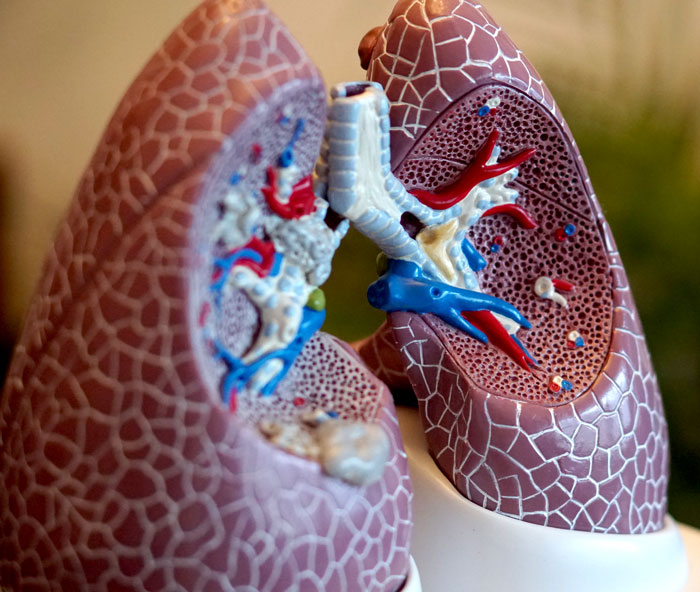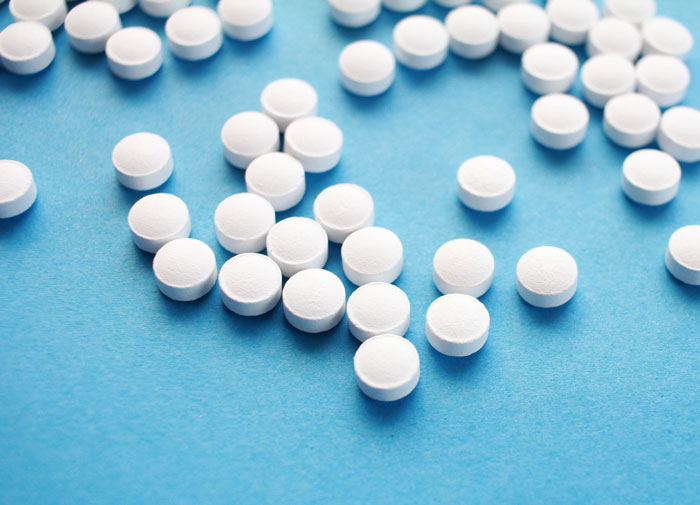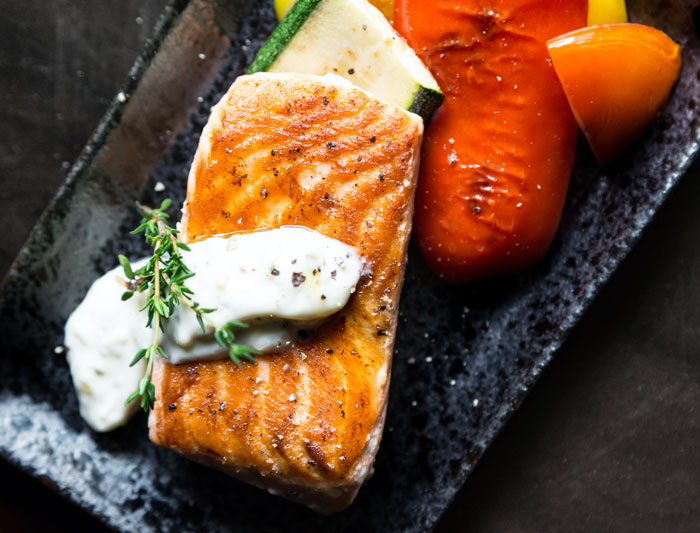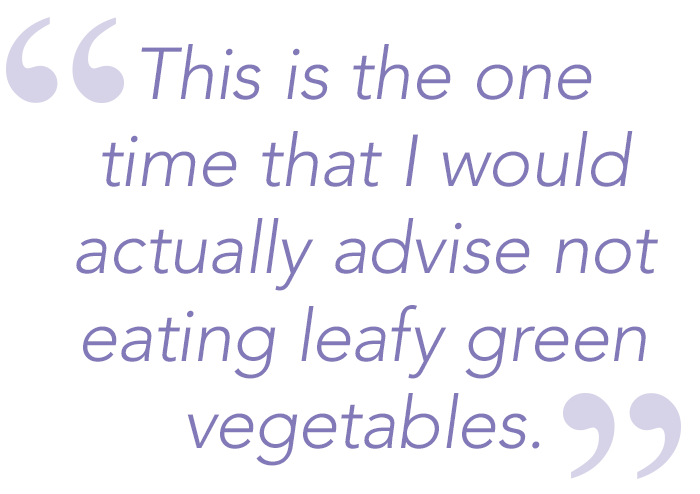COVID-19 Diet: What to Eat When Sick with the Novel Coronavirus
May 15, 2020
Wei-Shin Lai, M.D.

How COVID-19 is Causing Blood Clots Even in Young People
 COVID-19 causes your blood to “thicken,1” which leads to strokes,2 pulmonary embolism,3 “COVID toes,4” kidney failure,5 and all sorts of blood clotting problems. One of the mechanisms for why some people have trouble breathing is because of tiny blood clots in the capillaries of the lungs.6 If the blood vessels in the lungs are blocked off, then air exchange between the blood and the sacs of air cannot occur.7 Doctors have even used heavy duty drugs like tPA,8 normally used to dissolve clots that cause strokes in the brain, to treat the clots in the lungs. There are multiple cases of strokes in relatively young people (under 50).9 Autopsy results found clots in lungs, kidneys, and other areas with small blood vessels.10 One of the causes of “COVID toes” is small blood clots.11 Suffice to say, blood clotting is generally increased in COVID-19, and more clots mean more problems.12
COVID-19 causes your blood to “thicken,1” which leads to strokes,2 pulmonary embolism,3 “COVID toes,4” kidney failure,5 and all sorts of blood clotting problems. One of the mechanisms for why some people have trouble breathing is because of tiny blood clots in the capillaries of the lungs.6 If the blood vessels in the lungs are blocked off, then air exchange between the blood and the sacs of air cannot occur.7 Doctors have even used heavy duty drugs like tPA,8 normally used to dissolve clots that cause strokes in the brain, to treat the clots in the lungs. There are multiple cases of strokes in relatively young people (under 50).9 Autopsy results found clots in lungs, kidneys, and other areas with small blood vessels.10 One of the causes of “COVID toes” is small blood clots.11 Suffice to say, blood clotting is generally increased in COVID-19, and more clots mean more problems.12
Does Blood Clot-Preventing Medicine Help?
 The exact mechanism for why blood is more prone to clotting during COVID-19 isn’t clear yet. While inflammation plays a role, the blood is disproportionately “thick” (hypercoagulable) compared with other infectious diseases and is a distinguishing feature of COVID.13 There are many components and pathways involved in how blood clots. Different drugs like heparin, Lovenox, and Coumadin (rat poison) block different clotting factors. Until we know how the virus impacts the various clotting pathways, we can only guess at what works best. However, a study of 449 patients showed that those who received blood clot-preventing medicine heparin had better outcomes.14
The exact mechanism for why blood is more prone to clotting during COVID-19 isn’t clear yet. While inflammation plays a role, the blood is disproportionately “thick” (hypercoagulable) compared with other infectious diseases and is a distinguishing feature of COVID.13 There are many components and pathways involved in how blood clots. Different drugs like heparin, Lovenox, and Coumadin (rat poison) block different clotting factors. Until we know how the virus impacts the various clotting pathways, we can only guess at what works best. However, a study of 449 patients showed that those who received blood clot-preventing medicine heparin had better outcomes.14
Diet Changes You Can Make at Home When Sick with COVID-19
For those of us with COVID-19 not in a hospital under a doctor’s close care, there are potentially a few natural dietary ways to reduce our risk of developing bad clots that could land us in the hospital, permanently disabled, or dead. Please note that if you have a condition that increases blood clotting (Factor V Lieden, for example) or blood thinning (taking warfarin, plavix, aspirin, or von Willebrand disease, for example), please disregard everything in this article. Consult your hematologist or primary care doctor for what you should do. It may be dangerous to arbitrarily change your diet without consulting your doctor. Please also see my disclaimers in the final paragraph.
Thinning Blood and Reducing Inflammation with Diet Changes
 If I start with symptoms of COVID-19, I will consider making some dietary changes to reduce my blood’s tendency to form unwanted clots. The two guiding principles for these suggestions include thinning blood and reducing inflammation. While many risk factors such as age, obesity status, smoking status, and “pre-existing conditions” impact recovery, many of those factors are out of our immediate control. For example, obesity is an important risk factor,15 but it is unrealistic and potentially unhealthy to try to lose weight during a serious illness. What you can actually impact relatively quickly (within days) is your blood coagulability. Changes to your diet today result in detectable changes to your coagulation blood tests within a week.16 To a slightly lesser extent, you may be able to reduce your general level of inflammation, which the virus will cause to skyrocket.
If I start with symptoms of COVID-19, I will consider making some dietary changes to reduce my blood’s tendency to form unwanted clots. The two guiding principles for these suggestions include thinning blood and reducing inflammation. While many risk factors such as age, obesity status, smoking status, and “pre-existing conditions” impact recovery, many of those factors are out of our immediate control. For example, obesity is an important risk factor,15 but it is unrealistic and potentially unhealthy to try to lose weight during a serious illness. What you can actually impact relatively quickly (within days) is your blood coagulability. Changes to your diet today result in detectable changes to your coagulation blood tests within a week.16 To a slightly lesser extent, you may be able to reduce your general level of inflammation, which the virus will cause to skyrocket.
These suggestions certainly are not medical advice. You must continue to follow your own dietary restrictions from allergies and sensitivities such as nuts and gluten. If you never do well with certain foods, then don’t try to squeeze them into your diet. If you really like certain foods, enjoy them. Staying happy enough is an important part of life.
Macronutrient and Micronutrient Changes to Make
As noted above, the key things this diet influences are blood coagulability and to a lesser extent, inflammation. Here’s the low-down on the macronutrient and micronutrient tweaks. This section is for the people who read nutrition labels and are amateur nutritionists. This is in order of importance, from my point of view.
- Reduce foods high in Vitamin K1, which thickens blood.17
- Increase Omega-3 fatty acids to thin blood and reduce inflammation.18
- Increase intake of certain spices that thin blood, including garlic, ginger, turmeric, spicy peppers, and cinnamon.19
- Increase Vitamin E, which thins blood.20
- Decrease saturated fats to reduce inflammation.17
- Decrease Omega-6 fatty acids that increase inflammation when unbalanced with other fatty acids.21
When Should I Follow These Food Suggestions?

When you are not sick with COVID-19, traditional dietary advice like reducing sugar, red meat, fried foods, and processed foods help people live healthier lives. This article is not about general nutrition advice. This is focused on the two to three weeks when you are sick at home with COVID-19. More than 80% of people who catch the novel coronavirus will not need to be hospitalized. Other than going to a drive-through for testing, the non-hospitalized group may not even see a doctor in person. Other than the usual “stay hydrated,” “stay isolated” advice, what else could you proactively do for your health? Choose the foods that may reduce complications.
Leafy green vegetables like spinach, broccoli, asparagus, kale, parsley, romaine lettuce, seaweed, cabbages, and various asian greens (all cruciferous and mustard vegetables, basically) are high in Vitamin K which is part of the blood clotting process22. This is the one time that I would actually advise not eating leafy green vegetables. The list is long, so just look up Vitamin K and vegetables if you aren’t sure.
Easy Food Substitutions to Prevent Blood Clotting When Sick with COVID-19

The chart below provides information for simple food substitutions that may impact recovery. Many people struggle to eat much at all when they are sick. It’s difficult to die from not eating. It’s possible to die from not drinking enough. So if you simply aren’t hungry, at least sip some broth throughout the day. A slightly salty broth will replenish electrolytes lost from fever sweats, and small amounts of it is easier to digest and tolerate. In addition, over 30% of people reported anosmia23 or dysgeusia24, which is a loss of smell or taste. This is a particular feature of COVID-19, much like the hypercoagulability, which differentiates it from other viral illnesses like influenza. Eating is less enjoyable if you cannot appreciate flavors, but it is still important to eat for nutrition.
Here are some suggestions for food substitutions with COVID-19:
View Chart as PDF • View Chart as PNG
| INSTEAD OF THIS |
|
|
|---|---|---|
| Caesar salad | Iceberg lettuce salad | Romaine lettuce has higher Vitamin K levels than iceberg lettuce. |
| Shelf-stable store-bought salad dressing | Flaxseed oil based homemade salad dressing | Mixed vegetable oil dressings are higher in Omega-6 fatty acids. Flaxseed oil is mostly Omega-3 fatty acids. |
| Green smoothie (made with kale, spinach, or broccoli) | Orange, carrot, or apple-based smoothie | Stay away from leafy greens high in Vitamin K. |
| Cream of spinach, broccoli | Green bean casserole | Stay away from leafy greens high in Vitamin K. |
| Saag/palak paneer | Navratan korma - even better, chana masala | If you crave a thick creamy vegetarian Indian dish, stay away from leafy greens high in Vitamin K, increase Vitamin E in the cashews and up the blood-thinning spices. |
| Chicken with broccoli | Chicken with snow pea or cashew chicken | Stay away from leafy greens high in Vitamin K. |
| Filet of steak | Filet of salmon | Increase Omega-3 fatty acids and reduce saturated fat. |
| Anything | Sardines | If you can’t smell, you might as well eat canned sardines for Omega 3 fatty acids. |
| Cauliflower rice | White rice or brown rice | While it’s not green, cauliflower is related to broccoli and collard greens, which are all high in Vitamin K. |
| Beer | Wine | Grape-based wines have polyphenols that reduce clotting.25 |
| Gatorade | Broth | Sports drinks have too much sugar for the amount of electrolytes. Broth is all electrolytes. |
| Traditional cow milk, whole | Grass-fed cow milk, whole | Grass-fed will have higher Omega-3 fatty acids. But if you buy skim milk, then it’s far less important. |
| Pumpkin pie | Pecan pie | If you crave the sugar, you might as well get Vitamin E rather than Vitamin A. |
| Sushi with seaweed | Sushi without seaweed | Reduce Vitamin K from the seaweed. |
| Chicken salad sandwich | Tuna salad sandwich | Increase Omega-3 intake from the fish. |
| Ham sandwich | Peanut butter, sunflower butter, or almond butter sandwich | Increase Vitamin E from the seeds and nuts. |
| Eggs | Eggs from your neighbor’s pastured chickens | Chickens pecking on bugs and seeds lay eggs with higher Omega-3 fatty acids. |
| Spaghetti with alfredo sauce | Spaghetti with tomato sauce | Reduce saturated fat from butter. |
| Beef chili | Turkey chili | Reduces saturated fat. If the substitution isn’t nearly as enjoyable, don’t worry about this. |
| Full-fat cheese | Low-fat cheese | Reduces saturated fat. |
| Hamburger | Turkey burger | If you make your own patties, you can hide a bit of lower-saturated fat ground turkey. If not, it’s not that important in the short term. |
| Tacos | Chicken or fish taco | Reduces saturated fat. If the substitution isn’t nearly as enjoyable, don’t worry about this. |
| Rice and beans | Brown rice and beans | If the substitution isn’t nearly as enjoyable, don’t worry about this. Whole grain reduces inflammation. |
| Pancakes | Buckwheat pancakes | If the substitution isn’t nearly as enjoyable, don’t worry about this. Whole grain reduces inflammation. |
| Bacon, sausage | Lean bacon, turkey sausage | Try to reduce eating so much fatty meat, but not super important short term. |
| Ice cream | Sorbet | Reduces saturated fat. If the substitution isn’t nearly as enjoyable, don’t worry about this. |
| Mac and cheese, chicken nuggets, fried chicken, hot dogs, wings, fries, pizza, cookies, chocolate | Generally not healthy, but there are no easy substitutes. Enjoy in moderation. |
Supplements and Medicines That Thin Blood
There are various supplements that may also thin blood, like ginkgo,26 feverfew, and dong quai. I’m not familiar with the dosing necessary for anticoagulation, and I prefer to stick to more natural, food-based solutions. Other common over-the-counter supplements and medicines that thin blood include fish oil (focusing on Omega-3), Vitamin E, and baby aspirin (81mg). Aspirin is currently in a clinical trial for COVID-19 to prevent severe illness.27 Aspirin has not been proven to work and cannot be recommended routinely, because aspirin has various side effects. Aspirin definitely should not be given to children unless a doctor is involved. If you do test COVID positive, you could ask your doctor if it’s safe to take a baby aspirin in addition to the dietary information above.
Possibility of Anticoagulation Measures Helping COVID-19 Outcome
For most people, COVID-19 illness is not deadly. During the first week, symptoms tend to resemble the flu. The second week is when patients either start to get better or take a turn for the worse. If you get ahead of the illness during the first week via dietary changes, you can impact your blood coagulability status if things get worse. While there have been many studies documenting the hypercoagulable state of COVID-19 patients, there have not been any studies proving that dietary changes impact outcome favorably for the non-hospitalized patient. There was only one widely accepted study showing that anticoagulation medicine for hospitalized patients with high-grade coagulation problems seemed to improve outcome.28 By writing this, as a legal disclaimer, I’m saying that there is no proof that the information above will help you or anyone else. I am simply presenting evidence for you to further research and make your own decisions. I’m certainly going to be making choices with my food intake if I get COVID-19, and the information presented here is how I make my personal choices.
All product and other information obtained through or presented on the Site is for informational purposes only. You should consult with a qualified healthcare professional for specific information about any personal care, healthcare or medical needs. The products provided through and the information provided on the Site are not intended to substitute in any manner for medical treatment, medical advice, or medical diagnosis by a doctor or other healthcare professional. You should not forego, change or stop any tests or treatments that have been prescribed or recommended by any of your healthcare provider(s) without first consulting with your healthcare provider(s). You should not rely on any product you receive through or any information you receive from the Site when making any personal care, healthcare or medical decision, including but not limited to any decisions about treatment, testing, diagnosis or follow up. IF YOU ARE, OR SUSPECT THAT YOU ARE EXPERIENCING A HEALTH EMERGENCY, PLEASE CALL 911.
1 https://onlinelibrary.wiley.com/doi/full/10.1111/jth.14810
2 https://www.sciencedirect.com/science/article/pii/S0889159120306851
3 https://wwwnc.cdc.gov/eid/article/26/8/20-1477_article
4 http://www.nerealanda.com/pdf/Lessions-on-feet-and-hands-during-the-COVID-19-pandemic.pdf
, https://www.japmaonline.org/doi/pdf/10.7547/20-088
5 https://www.kidney-international.org/article/S0085-2538(20)30369-0/pdf
6 https://www.sciencedirect.com/science/article/pii/S1054880720300375
7 https://www.thieme-connect.com/products/ejournals/html/10.1055/s-0040-1710018
8 https://www.sciencedaily.com/releases/2020/04/200406190424.htm
9 https://www.nejm.org/doi/full/10.1056/NEJMc2009787?query=featured_home
10 https://www.sciencedirect.com/science/article/pii/S1054880720300375
11 https://www.ncbi.nlm.nih.gov/pmc/articles/PMC7203033/
12 https://onlinelibrary.wiley.com/doi/full/10.1111/jth.14768
13 https://papers.ssrn.com/sol3/papers.cfm?abstract_id=3544837
14 https://onlinelibrary.wiley.com/doi/full/10.1111/jth.14817
15 https://onlinelibrary.wiley.com/doi/epdf/10.1002/oby.22831
16 https://onlinelibrary.wiley.com/doi/abs/10.1111/j.0954-6820.1986.tb02776.x
17 https://europepmc.org/article/med/359368
18 http://www.onlinejacc.org/content/48/4/677.abstract
19 Asian Journal of Pharmaceutical Science & Technology, Vol 5, Issue 4, 2015, 271-284. THERAPEUTIC PROPERTIES OF MEDICINAL PLANTS: A REVIEW OF PLANTS WITH HYPOLIPIDEMIC, HEMOSTATIC, FIBRINOLYTIC AND ANTICOAGULANT EFFECTS
20 https://academic.oup.com/ajcn/article-abstract/29/5/569/4649306
21 https://www.cambridge.org/core/journals/british-journal-of-nutrition/article/lowgrade-inflammation-diet-composition-and-health-current-research-evidence-and-its-translation/6B2D26F3FA0E0B1D8E8BD77DA2A9F4C1/core-reader
22 https://ods.od.nih.gov/factsheets/vitaminK-HealthProfessional/, https://www.annualreviews.org/doi/pdf/10.1146/annurev.me.27.020176.001333
23 https://onlinelibrary.wiley.com/doi/epdf/10.1002/alr.22592
24 https://www.thelancet.com/journals/laninf/article/PIIS1473-3099(20)30293-0/fulltext
25 https://www.sciencedirect.com/science/article/abs/pii/S0367326X1100116X
26 https://www.sciencedirect.com/science/article/abs/pii/S1744388106000430
28 https://onlinelibrary.wiley.com/doi/full/10.1111/jth.14817
Brought to you by AcousticSheep LLC, maker of SleepPhones®, the most comfortable headphones you can wear in bed. SleepPhones® were invented by the author and her husband. Click here for more information. Dr. Lai also blogs about the coronavirus, having almost joined the CDC 15 years ago. 2020 © AcousticSheep LLC

